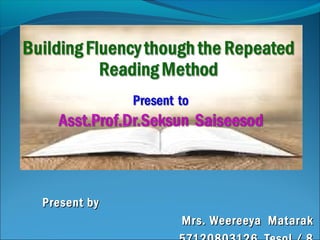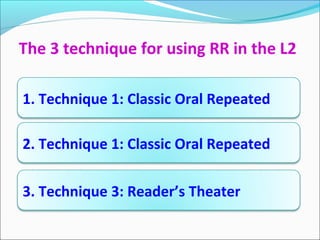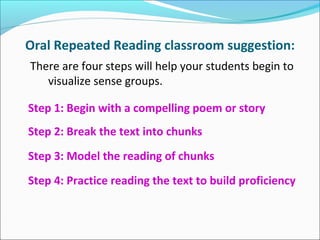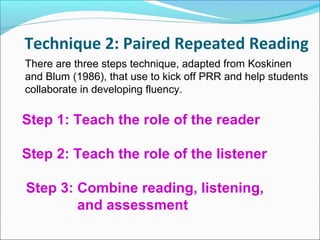The document discusses techniques for using repeated reading (RR) to improve reading fluency in a second language classroom. It describes three techniques: 1) classic oral repeated reading, where students read text chunks out loud multiple times; 2) paired repeated reading, where students take turns reading to each other; and 3) reader's theater, where students rehearse and perform scripts. It provides suggestions for implementing each technique, such as modeling fluent reading, dividing texts into chunks, and having students focus on pronunciation. The conclusion emphasizes that RR techniques like oral reading can help less fluent L2 readers improve their decoding, fluency, accuracy and comprehension.














